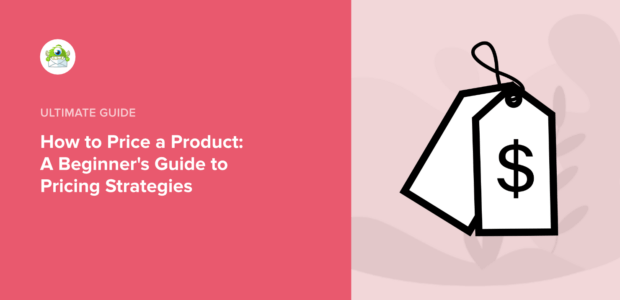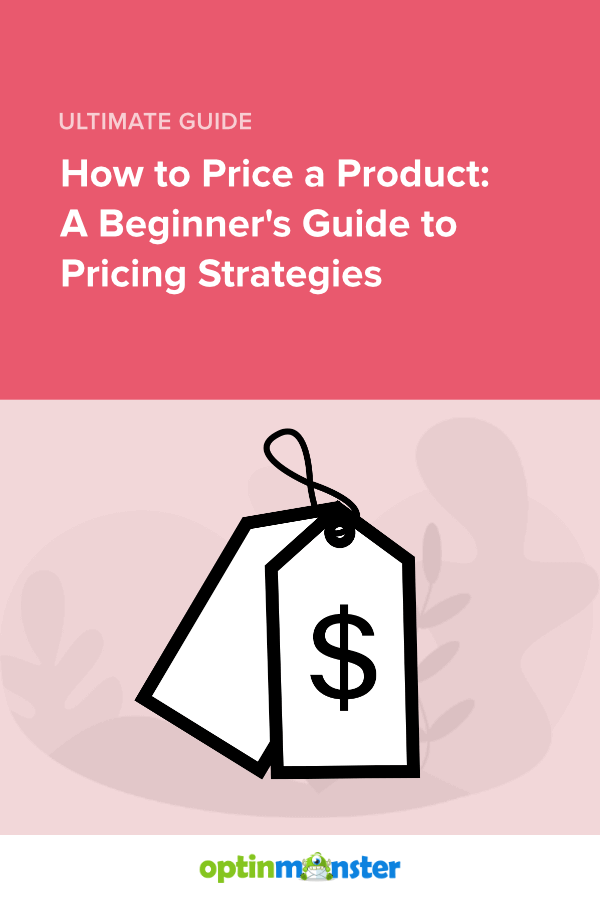Do you want to learn how to price a product so you can hit the sweet spot between value and profit? If you’re a small business owner or work for a startup, it can be tricky to determine the best price for a new product.
According to a 2023 survey of over 8,000 U.S. consumers, 93% said the price of a product can make or break a sale.
In order to succeed, you need a competitive price that will appeal to customers. At the same time, you also have to meet all of your business expenses, plus make a profit so your business can grow.
Product pricing touches nearly every aspect of your eCommerce business plan, from cash flow to profit margins, but with so many ways to price a product, it’s confusing to know which pricing strategies and models to use.
In this article, I’ll provide an overview of common pricing strategies and models, and I’ll go over some best practices for how to price a product. With this information at your fingertips, you’ll be ready to start the process of determining the perfect prices for your products.
- What Is Product Pricing?
- Types of Product Pricing Strategies
- Common Product Pricing Models
- How to Price Your Product (4 Best Practices)
What Is Product Pricing?
Product pricing is the process of determining how much to charge customers for a product or service. Many factors go into product pricing decisions, including:
- Cost of raw materials
- Labor costs
- Other business overhead costs
- Competitor pricing
- Perceived value of the product
- Investor expectations
- Long-term business growth
Whether you’re selling physical products, digital content, software, or subscription services, pricing is a key factor for attracting customers and growing your business.
Next, I’m going to discuss 2 important factors in product pricing: pricing strategies and pricing models.
Types of Product Pricing Strategies
A pricing strategy is the overall approach you take when deciding on the right price for your product. You may use more than one strategy for any single product. Be aware that this list isn’t comprehensive. After all, every industry, business, and product type has its own distinctive strategies for pricing. However, these strategies will give you an overview of some of the best ways to approach your product pricing.
Cost-Plus Pricing
Cost-plus pricing is perhaps the simplest approach. You simply calculate your exact cost-per-unit and then add the desired profit margin to reach your selling price.
Pros: This strategy is straightforward, and it ensures that you meet your bottom line. It’s a good choice for physical products that don’t experience much fluctuation in production costs.
Cons: If used on its own, cost-plus pricing ignores a lot of vital factors, such as market demand and competition.
Value-Based Pricing
Value-based pricing focuses on what customers believe your product is worth and what they’re willing to pay for it.
Pros: Because it’s consumer-centered, this approach helps you appeal to your customers. It’s especially useful for products that solve a specific problem or have a strong value proposition.
Cons: You must conduct in-depth market research to accurately determine your product’s perceived value. This process is powerful but is also expensive and time-consuming.
Competitor-Based Pricing
In competitor-based pricing, you look to other companies in your industry to decide on your product’s price. You either try to:
- Match their price: When taking this approach, your marketing team can focus on proving your product is of higher quality for the same price.
- Undercut their price: Win more sales by offering a similar product at a lower cost.
- Set a higher price: Position your product as a premium option.
Pros: This pricing strategy gives you fine control over your price position within your industry. It also gives your marketing team a clear guide to communicate how your product compares to your competitors.
Cons: When trying to match or undercut competitor prices, make sure you don’t set your price too low. You still have to meet your business costs and include a profit margin. If you’re a small or new company trying to compete with established brands, trying to compete on price could tank your business.
The next 2 pricing strategies are closely related to the competitor-based approach.
Premium Pricing
Premium pricing is an offshoot of the competitor-based strategy. It’s when you purposefully set a higher price than similar products in your industry. Premium pricing lets you establish your product as the luxury choice or best-in-class option in your field.
Pros: This strategy gives you a higher profit margin. It’s best for products that offer unique features, solve important problems, or have unparalleled quality. It can also help small businesses that offer specialized products but can’t compete with the pricing of larger companies.
Cons: If you set a high price, be prepared to earn it. You’ll have to back up that price in every aspect of your brand. That includes product quality, customer support, social proof like customer reviews and testimonials, and your overall marketing messaging.
Economy Pricing
Economy pricing is the opposite of premium pricing. It’s when you offer your product at a lower price than your competition, in order to appeal to a cost-conscious target audience.
Pros: This strategy is perfect for entry-level products geared at beginners, hobbyists, and people on a budget. Economy pricing is also often used by big businesses whose sales volume allows for a smaller profit margin. When you use this strategy, price comparison tables become your marketing team’s greatest tool.
Cons: You must make sure that your low price is sustainable. You also run the risk of potential customers thinking your product is of lower quality.
Remember, you can combine these approaches to create the best strategy for your product. For instance, you may start with a cost-plus strategy to determine the minimum price that will be sustainable for your business. Then, you can do competitor research to determine your final price, so you can position your product price appropriately within your industry.
Common Product Pricing Models
A pricing model is the actual structure that you use to price your products. Here are a few common ones to consider.
Fixed Pricing
Fixed pricing is when your product has one price that always stays the same. You can always offer special coupons and discounts, but the standard price doesn’t change. This model offers predictability and stability for consumers. For fixed pricing to be successful, you need a stable market with minimum fluctuations in demand and production costs.
Best for: Individual physical products, one-time digital downloads, and software that doesn’t require a subscription, updates, or ongoing customer support.
Dynamic Pricing
Dynamic pricing is a model where your price changes based on factors such as demand and competitor prices. This model lets businesses increase profit margins when demand is high and be more competitive during times of lower demand.
Best for: Products with highly fluctuating demand, such as hotel rooms, concert tickets, airline seats, or ride-shares.
Bulk Pricing
In the bulk pricing model, you offer discounts to customers who purchase your product in large quantities. Often, the price-per-unit decreases as the purchase volume increases. For instance, someone buying 500 units might pay $15 per unit, while someone buying $1000 would pay $12.50 per unit.
Best for: Wholesale products, B2B (business-to-business) transactions, and multi-license software purchases.
Freemium
Freemium pricing is frequently used for digital products and services. In the freemium model, a free basic version is available, but customers can pay for more advanced features and capabilities.
Best for: SaaS (software as a service) products, digital services, apps, and online platforms.
Flat-Rate Subscription
Next, let’s discuss pricing models for subscriptions. In a flat-rate subscription, everyone pays the same subscription fee for your product or service. The fee may be paid at weekly, monthly, or yearly intervals.
Best for: Streaming services, simple SaaS services, or monthly box subscriptions where each box is of similar value.
Tiered Subscription
Tiered subscription pricing involves multiple pricing levels. In fact, that’s what we offer here at OptinMonster:
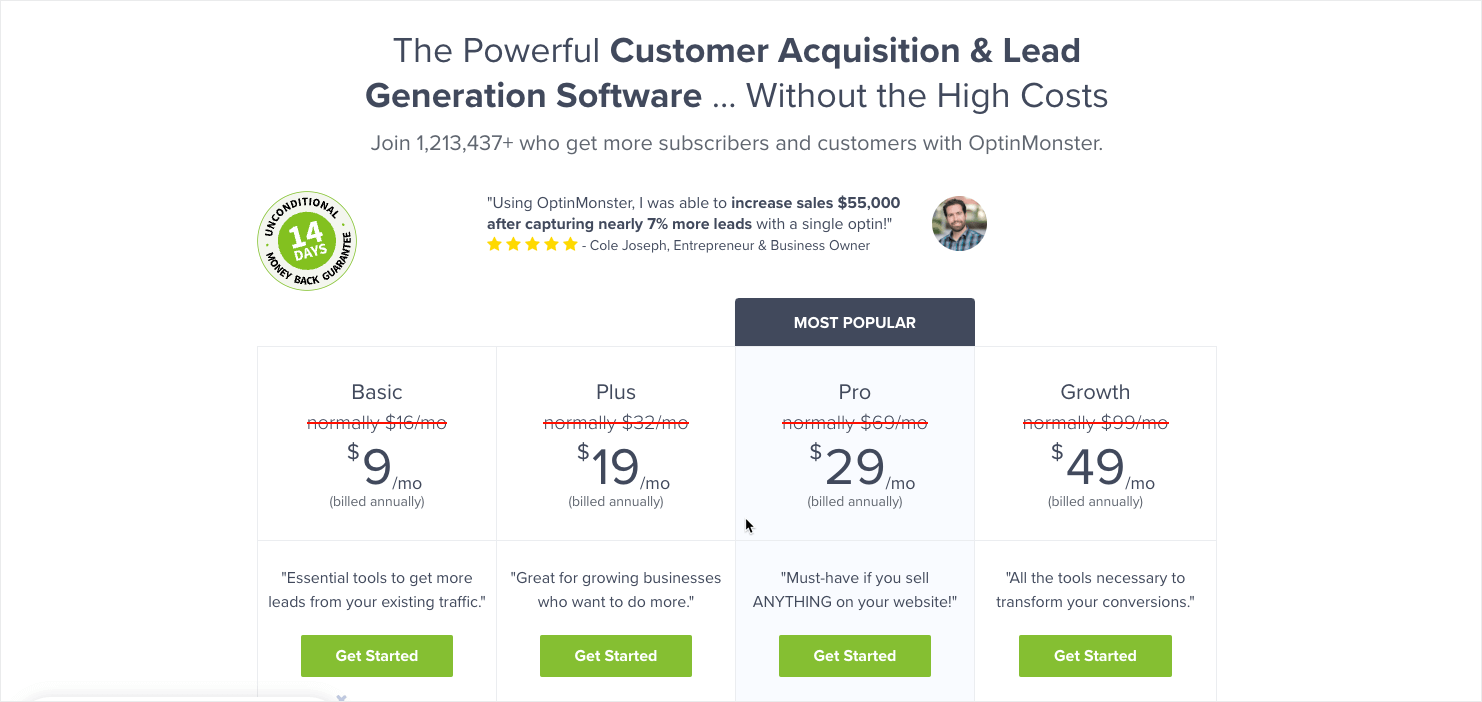
The different pricing tiers often include varying features, upgrades, and advanced functionality.
Best for: Scalable SaaS services, as well as any subscription with a diverse customer base with a wide range of needs and budgets.
How to Price Your Product (4 Best Practices)
You could analyze 100 different real-life pricing methods, and no 2 would look the same or include the exact same steps. However, there are some best practices that will help you succeed in developing competitive and profitable prices for your products and services.
1. Research Your Target Audience and Your Competition
No matter which pricing strategies and models you use, you’re going to need data to drive those decisions. During your product development, you hopefully already conducted market research and created a buyer persona. That information will be vital in understanding what your target audience is willing to pay for your product.
While you’re conducting your market research, don’t forget the importance of qualitative studies, which will help you understand the reasons and motivations behind consumers’ decisions.
In addition to understanding your potential customers, you also need to understand your competition.
But, how can you find accurate competitive pricing data?
One way is to use a platform such as Prisync, which tracks and monitors competitor prices. You can use this data to make decisions about your pricing structures.
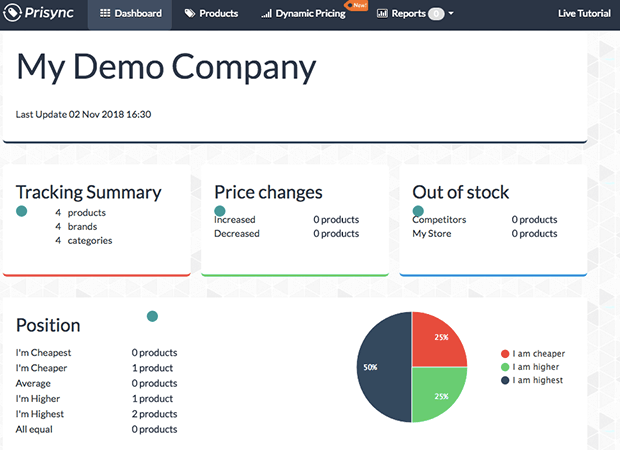
Software like this can save you time and boost your sales. For example, if you see that your competitor has increased their price, you’ll know that it’s a good time to offer a promotion on your product.
With this type of software, you can look at individual products to see how your pricing measures up to your competitors:
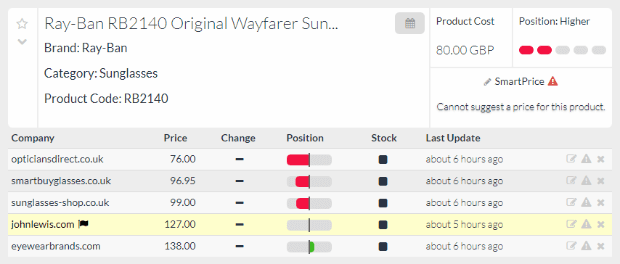
Check out our list of the top 25 competitor research tools to give you the advantage.
2. Work Together Across Teams
Effective pricing doesn’t happen in a vacuum. It requires collaboration and communication across all of your business’s departments, including sales, finance, marketing, customer support, and product development.
For instance, what if your customer support team gets regular feedback that your product isn’t worth the price?
Or what if there’s a price hike coming up, but your sales and marketing team don’t know about it? How can they effectively prepare customers for the change?
Cross-team communication is pivotal to keeping everyone on the same page and to discovering any problems with your pricing.
3. Maintain a Positive Value-to-Price Ratio
Customers want to know that they’re buying a product that has a positive value. In other words, they want to feel like they’re getting more than they paid for. The key here is perceived value, rather than the actual market value of your product.
Whatever product price you decide on, make sure your sales and marketing team are prepared to prove that the value exceeds the price. They’ll need proof and tools such as:
- Case studies
- Testimonials
- Competitor comparisons
- A strong elevator pitch full of benefits and features
- Resources to show exactly how your product will solve the customer’s problem
4. Monitor Results & Be Willing to Change
Even when you’ve done your research and followed all the best strategies, you can still sometimes get your pricing wrong. For example, you might have decided to price your product higher than your competitors because you believed it was worth the premium price tag.
However, if you go through a sales cycle and discover that customers aren’t willing to pay that premium, you might have to rethink your strategy.
Regularly monitor your products’ performance through metrics such as sales volume, revenue, profit margins, and market share. Be prepared to adjust your prices based on external market changes, internal cost fluctuations, or shifts in customer demand.
Set Your Price and Start Marketing!
Setting the price of your product requires a careful balance of research, cost analysis, and strategy. Now that you have a good idea of how to price a product, you’re ready to dig in and decide on the perfect cost points for your company.
Once your prices are set, it’s time to get started with your marketing strategy. In order to sell your product, you’ll need to generate leads. In other words, you need to find those potential customers who will be excited to learn more about your product.
That’s where OptinMonster comes in!
OptinMonster is the best lead-generation software on the market. With our onsite marketing campaigns, you can capture the attention of your website visitors and grow your email marketing list.
Want to learn more about email marketing and lead generation? Check out these resources:
- Email Marketing: The #1 Ridiculously Easy Way to Grow Your Business
- How to Create a Lightbox Popup to Get More Leads
- How to Create an Email Campaign (Step-by-Step Guide + Examples)
- 40+ Email Marketing Statistics You Need to Know
If you want to start turn your website into the ultimate lead-generating tool, try OptinMonster today!
Disclosure: Our content is reader-supported. This means if you click on some of our links, then we may earn a commission. We only recommend products that we believe will add value to our readers.
